Volusia County's award-winning lifeguards save lives by seeing things others don't
No day is average on Volusia County beaches.
Lifeguards such as Sara Monette must be ready for circumstances to change in a second, like what happened a couple of months ago.
Monette, a senior ocean lifeguard, responded to a 911 call reporting a swimmer in distress in New Smyrna Beach.
"It ended up being six or seven people pulled out in a rip current, and one of them went unconscious and didn't have a pulse," she said.
Monette, armed with a board, joined a few lifeguards who were already in the water, and they worked to bring the rest of the people to shore. An ambulance happened to be on the scene already; sometimes it takes longer for one to arrive.
The group used a rescue board to ferry the man to shore, and a deputy started CPR as they moved toward the ambulance.
Monette learned later that the man survived without complications.
"We can say for sure we saved a life that day," she said.
That's not a rarity for one of the nation's best lifeguard units, which the Florida Beach Patrol Chiefs Association recognized as the 2023 Beach Patrol of the Year.
That year, the same in which the agency saw a major shift in duties with the Volusia Sheriff's Office, Volusia County Beach Safety performed 2,512 water rescues and 35,811 preventive actions ― things like warning people they are in a rip current before they are in distress or waving a flag to get someone to come closer to shore. It's a key part of the job.
According to United States Lifesaving Association and Volusia County data, the agency was responsible for over 78,000 rescues and more than 1.3 million preventative actions from 1990 to 2023 ― and an untold number of lives saved.
"We attract so many people a year to our beaches and then we have these rip currents," Monette said. "That's why we have all of these staffed lifeguard towers."
Lifeguards use their training and wisdom handed down from others in the field to keep people safe, braving rip currents, rescuing swimmers and boaters, finding missing people, responding to medical calls, and more. They also guard a coastline that has another dangerous element: beach driving. And they develop a keen eye to spot potential dangers before they turn into emergencies.
'Attention bathers': Keeping swimmers safe in Daytona and beyond
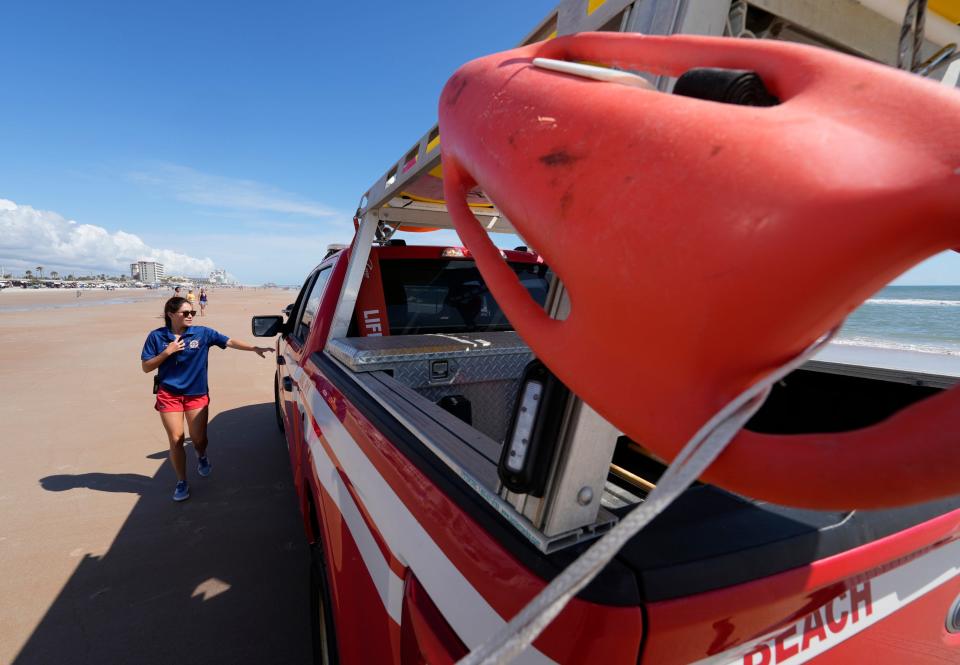
Lifeguards start their day by checking their equipment, doing drills and workouts and heading to their assignments on the beach.
Some guards are assigned to a particular tower on the beach, and others are on patrol in a region. The job of those on patrol in part is to provide backup and support to the tower guards ― but they, too, have to be ready for anything.
Monette is usually on patrol in New Smyrna Beach.
Guards have the authority to drive on non-driving sections of the beach, and they're specially trained to do so safely. During a visit by the News-Journal on May 4, Monette patrolled the Daytona Beach area in a marked Beach Safety patrol vehicle. The vehicles are stocked with ocean rescue gear and basic life support equipment ― such as oxygen, splints, an automated external defibrillator, a blood pressure cuff and a glucometer to check blood sugar.
She hadn't been buckled in long before getting a call, this one off the beach. A report came in that a woman had been hit by a vehicle on Route A1A. Monette and other lifeguards respond to those types of calls too if other agencies need backup.
She turned on her sirens and headed to the wreck, where she helped first responders get the woman ready for transport to the hospital.
Monette had to return quickly to the beach when a report of a missing woman came in.
It's not uncommon for children to go missing on the beach, too. Parents will often let their children swim alone, which lifeguards don't recommend, Monette said. The current can cause the child to drift away. Or the child might walk in the wrong direction on the sand because of the sun and wind in their face.
"We reunite tons of family members a year," she said.
Part of the job is being nimble, quickly shifting from call to call and always watching for people in distress in the ocean.
On her way to look for the missing person, Monette saw people in a rip-current area. So she stopped to make an announcement to them over her truck's public address system. No one was in distress, but it's one of the many actions lifeguards take daily to prevent emergencies.
"Attention to the bathers right in front of my truck. We have a high rip current risk today. I highly recommend that you stay waist-deep where you can stand. Start making your way in toward shore," she said.
Monette got out of her truck to talk to the swimmers after they came in to educate them about the dangers. Answering questions and educating the public is part of her job. Around the same time, she heard on the radio that the missing person had been found.
'Eyes on the water at all times': Lifeguards scan for danger
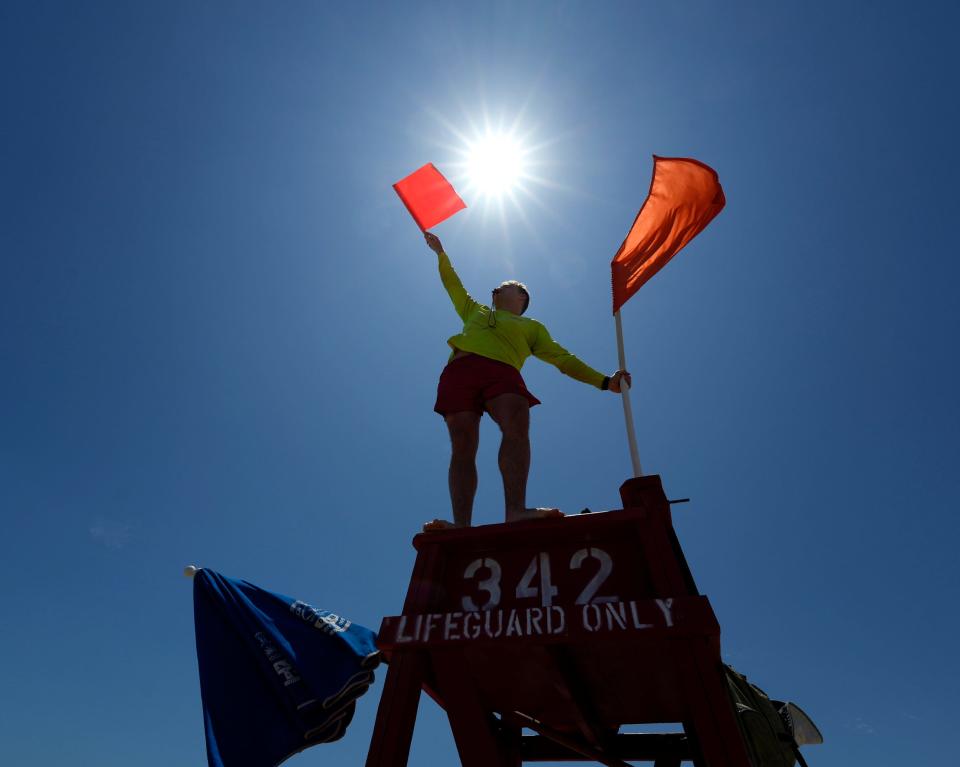
Close to Beach Safety headquarters at 515 S. Atlantic Ave. in Daytona Beach that afternoon, Tyler Dalecki took over the tower guard position to provide a break to the guard who was on duty.
Dalecki, a 22-year-old senior lifeguard, has been on the job for over six years and has developed a sharp eye for trouble in the water.
Lifeguards are always scanning the beach for a hint of trouble. They're paying attention to beach conditions as they start their day and throughout the day ― no cellphones allowed. The point is to keep a rescue from happening in the first place.
There have been countless times that a tower guard will be coming onto the beach to begin work and need to jump into the water before having set up for the day, Dalecki said.
"As a tower guard, your No. 1 priority is having your eyes on the water at all times," he said.
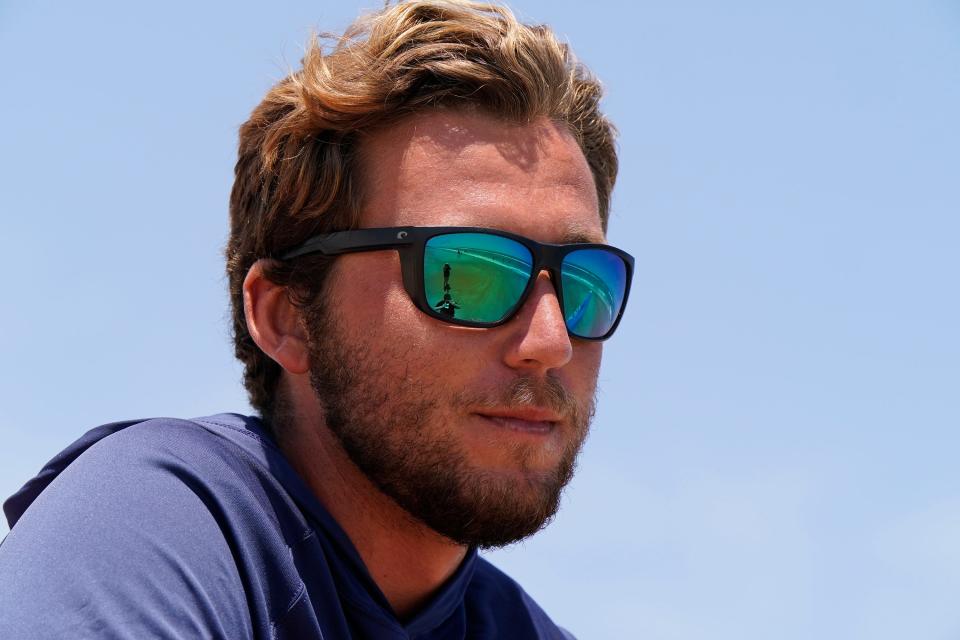
Tower guards are constantly scanning the water. Dalecki can see everything that's going on: where the rip currents are; the way the water is moving. If people are moving too far out or doing something else that's risky, he'll blow a whistle and use a flag to get them back to a safe position.
He's checking people's expressions and movements for signals of distress or other problems. Hair in the face is a distress signal, for example. Someone might be so tired that they don't want to waste energy pushing their hair off their face.
Some people scream for help, but others don't say a word. So the guards look for things like people trying to come in but still getting pushed farther out into the water, he said. The most obvious distress signal is when someone is moving up and down and making motions like they're trying to climb a ladder.
But lifeguards want to be in the water before they start making obvious distress signals.
Monette said while lifeguards are sitting on the tower, they're not just sitting.
"Their brain is working all day," she said.
Lifeguards also pay attention to people before they get into the water to see if they may be at higher risk ― such as children, the elderly, or frail people. Or people who look like they don't go in the ocean much.
"The whole family is crazy pale. They've got their water shoes on. Like, OK, they're probably from like Ohio," she said.
Daytona Beach also presents unique circumstances.
"During Bike Week we get a lot of bikers coming down with jeans and their boots on," Monette said. "That's really heavy. It's hard to swim in that."
People have their own roles to play in staying safe. Swimming in front of a staffed lifeguard tower is critical because it drastically reduces one's risk of drowning.
Beach Safety will staff as many lifeguard towers as possible. It just depends on how many people are available to work, Malphurs said.
People can find staffed lifeguard towers through the Volusia Beaches app.
Team support is key for Volusia County lifeguards
Part of Monette's job is to check on other lifeguards to see if they need a break, more equipment or other support.
On May 4, she checked on tower lifeguard Gabby Pisarczyk who had just rescued people who got into a rip current.
"I was trying to whistle at them and (they) ended up getting taken out before they even knew that it was happening. A couple of them made it back in. And I just had to bring in a couple of people in," she said.
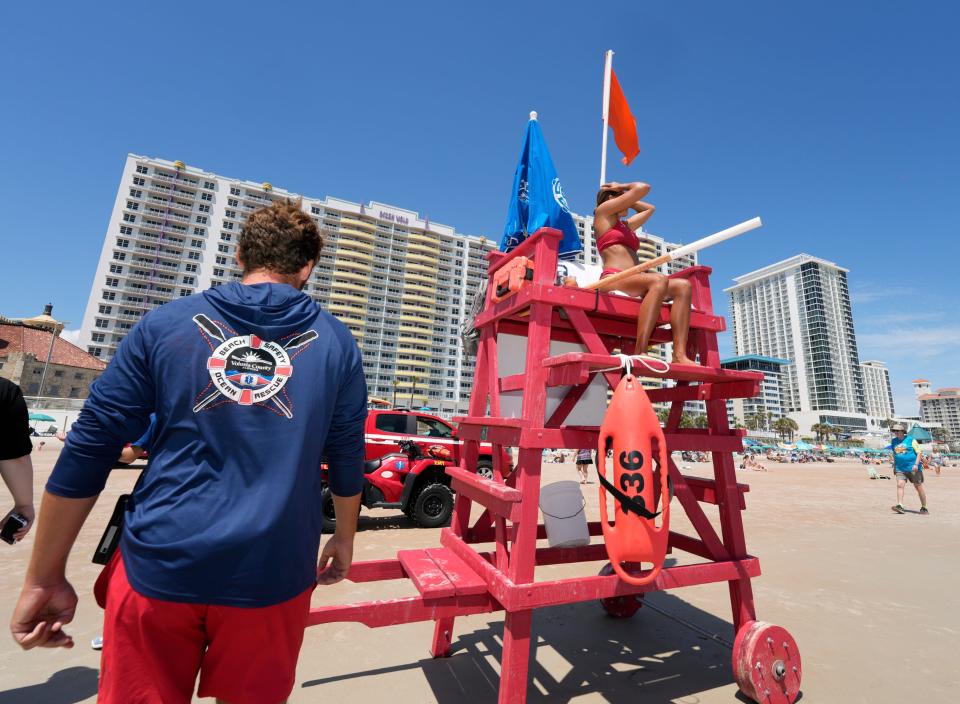
Monette is also a field training instructor. She teaches lifeguards how to drive on the beach and other aspects of the job. Monette said she had the benefit of learning from a very experienced lifeguard, who helped her fall in love with the job. And she loves to pass that knowledge along.
"I love training up any of our new recruits that come in, so usually when they do something really great, that's like my proudest moment," she said.
Lifeguards quickly shift into lifesaving mode even in their off hours. Monette remembers multiple rescues she took part in while she was off work but at the beach and recounted stories about coworkers rescuing people while they were out of the county. The eye for watching the water doesn't leave.
A long history of lifesaving in Daytona Beach and beyond
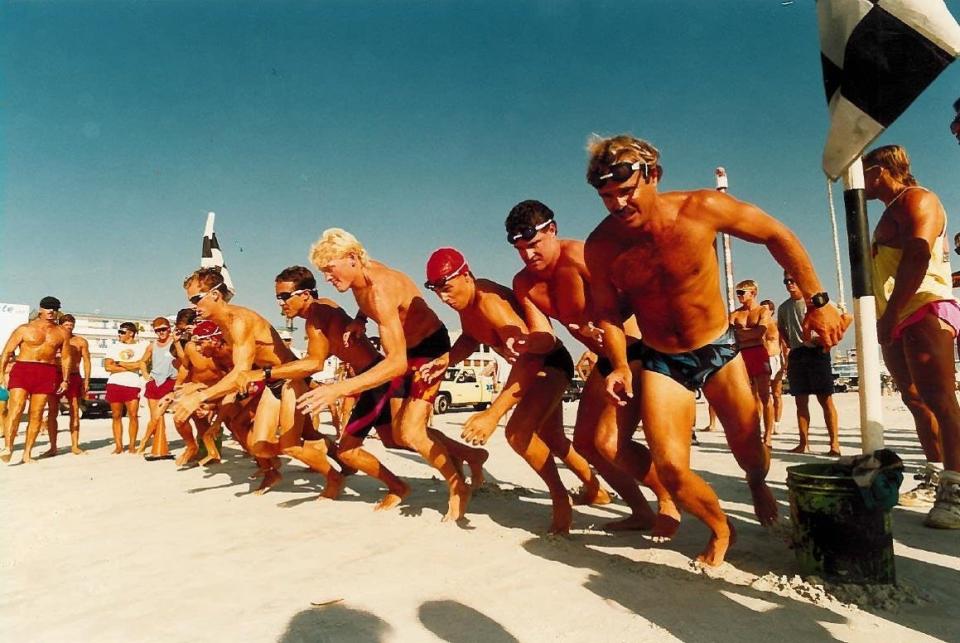
Volunteers began saving lives on the coast in the 1900s and in the 1920s. Communities formed their own lifesaving corps. The Daytona Beach Red Cross Life Saving Corps was formed not long after that.
Between 1929 and 1956 the county and three cities had coastal lifeguards, and in the 1960s and 1970s Daytona Beach, Ormond Beach and New Smyrna Beach merged with the county lifeguard corps.
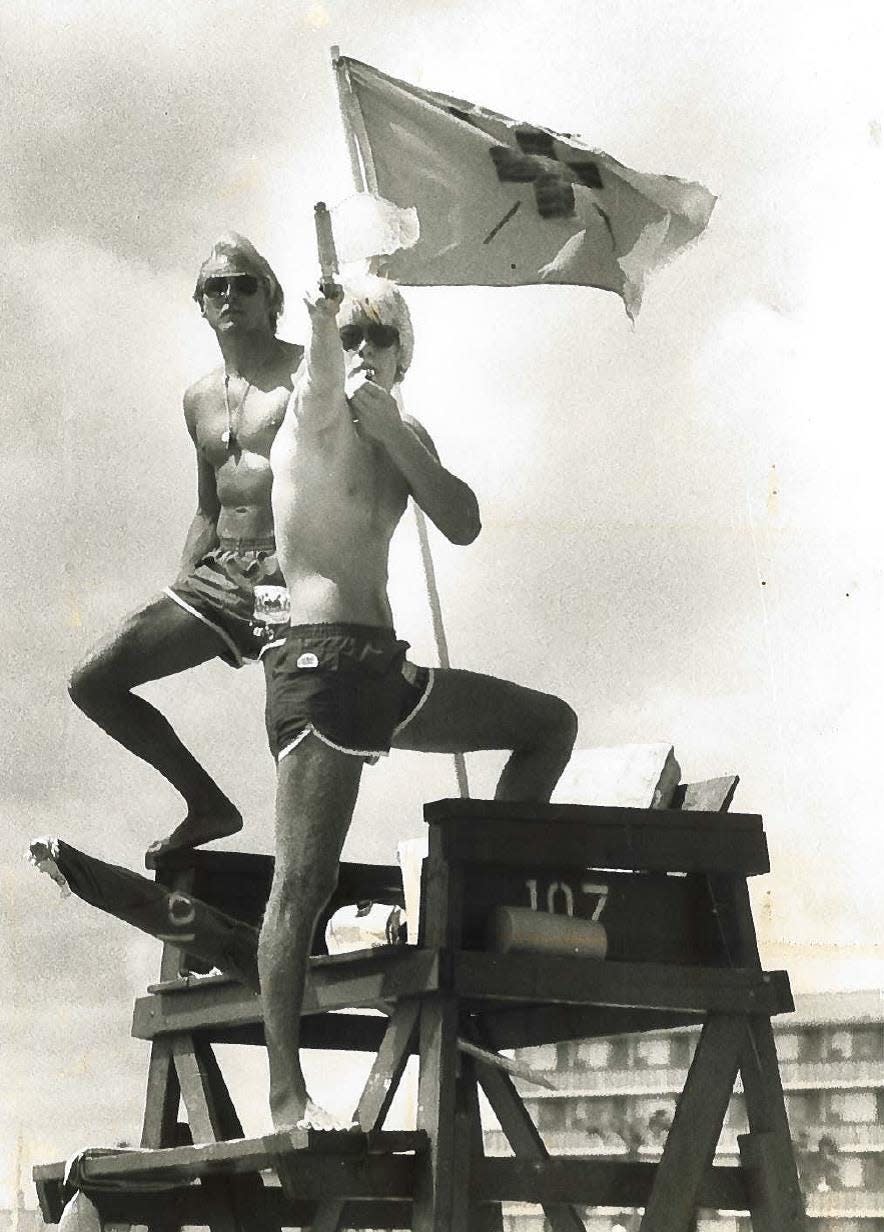
Volusia County Council Chairman Jeff Brower was a lifeguard from 1970 to 1979 in Volusia County, starting when he was 16 years old and working his way up to captain of what was the Daytona Beach zone at the time.
One of the things that he remembers about those days was the lack of good equipment. Guards drove surplus Army Jeeps, used a rowboat and CPR masks for giving rescue breaths that were really facemasks with a "piece of garden hose stuck in it and sealed with silicone."
Now the equipment is much better: jet skis, fully equipped trucks, ATVs and more.
He said the stress of the job and some of the things he saw ― like the people who didn't make it off the beach ― still stick with him.
"You know that in the drop of a hat, things could go sour," Brower said.
How to become a Volusia County lifeguard
It has always been a demanding job physically.
The basic requirements to join the corps include swimming 500 meters in up to 10 minutes, swimming 50 yards in up to 30 seconds and running 1/2 a mile in up to 3 minutes and 15 seconds.
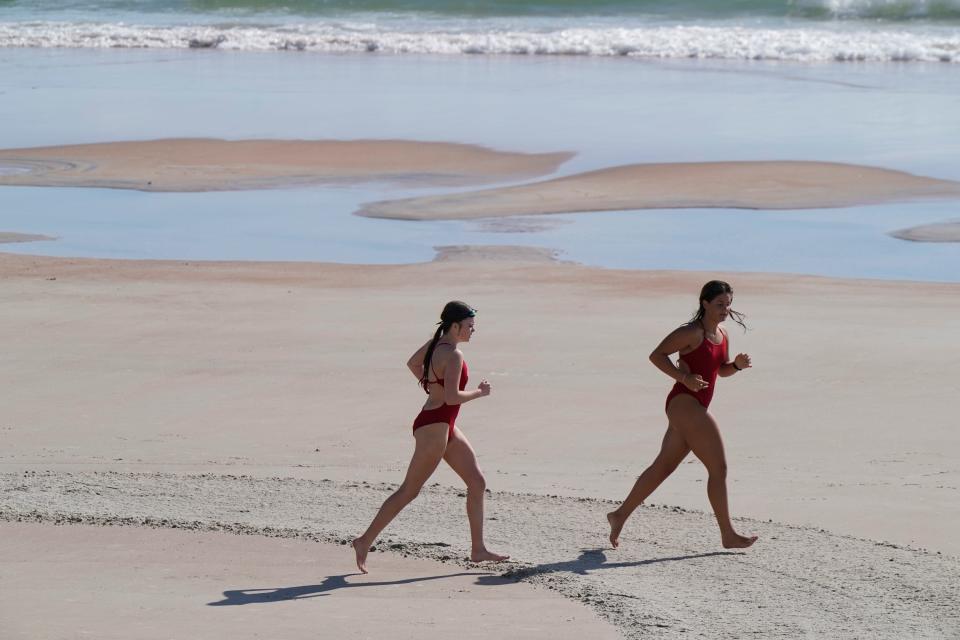
Lifeguards also have to complete recruit training, an emergency medical responder course and CPR training, among other requirements.
Lifeguards complete daily drills and workouts to keep in shape, and Volusia County's lifeguard corps regularly competes in lifeguard competitions.
Facing challenges on Volusia County beaches
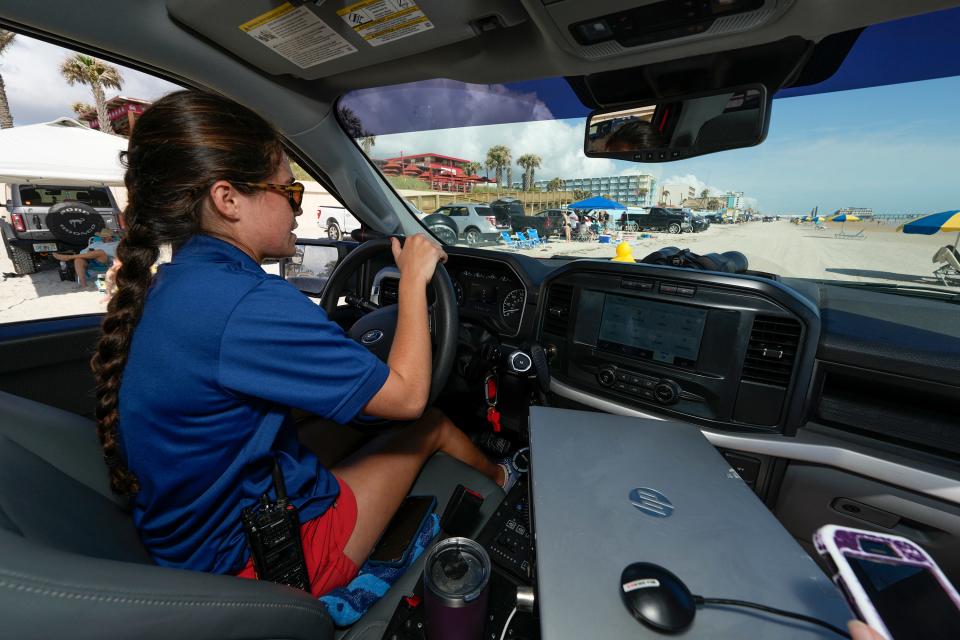
Like other agencies nationally, Beach Safety is looking for more recruits. The agency has increased pay to $17 an hour for starting lifeguards.
As of May 28th, the county had 53 full-time lifeguards and 167 part-time lifeguards on the payroll, Interim Beach Safety Director Tammy Malphurs said.
One challenge with staffing came in 2023 when the Volusia Sheriff's Office took over law enforcement duties on the beach as required by a new state law. Before that, Beach Safety also handled law enforcement duties. Now their staff no longer have law enforcement authority.
The transition of law enforcement powers led to a staff reduction for Beach Safety.
The division had about 70 full-time lifeguards at the start of 2023 and lost 26 during the transition. They went to the sheriff's office, another agency or took a different career path, former Beach Safety Director Andy Ethridge said in January.
Beach leadership changes: Volusia County Beach Safety director abruptly resigns
The same year the agency saw 13 drownings, the most it had seen since at least 1997. Eight of those people had medical issues that could have contributed to their deaths. And all were swimming in an area that didn't have a staffed lifeguard tower.
Malphurs said Beach Safety and the sheriff's office have worked well together since the transition, and a busy summer is ahead. Memorial Day weekend kicked it off.
"We had extremely large crowds with the busiest day being Sunday, probably some of the largest crowds we've seen in years," she said. "So I expect our summer to be about the same. And, you know, our personnel are ready for it. We're ready for the busy season and the water rescues."
Even off duty, a lifeguard is a lifeguard
Monette got into lifeguarding after her mother had a stroke. She hated not being able to do anything about her mom's condition, so she started looking for jobs where she could help people, she said. Then she found a shirt she had from when she took part in Volusia County's Junior Lifeguard Program, so she wondered if the county was hiring lifeguards. And there happened to be tryouts coming up.
Monette said she couldn't see herself working in a cubicle or some other mundane job.
"I tried to work at Starbucks for like a month when I was part-time as just like a side gig. I couldn't do it. I couldn't deal with people's problems. It was so, like, silly to me," she said.
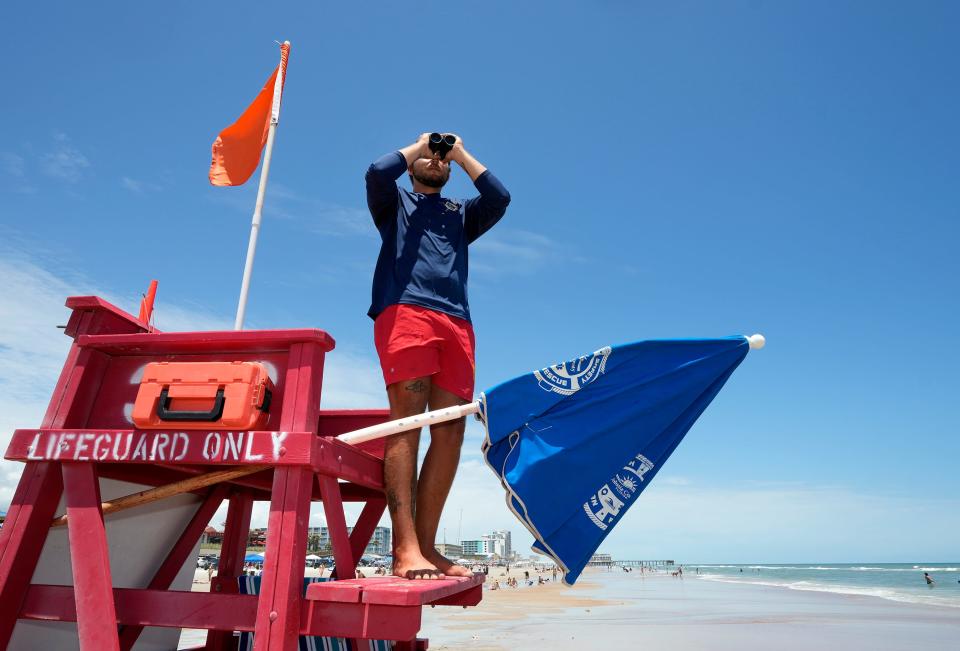
She talked about how much she loves her job and said she feels grateful that she found her passion early in life. Some people her age are still trying to figure out what they want to do and don't take their work seriously, she said.
"I think I'm really lucky to be a young person that has something to care about," she said.
Part of her work includes talking with people at recruiting events, and she gets questions about pay. Some point out that they can work an easier job for the same hourly rate, like Buc-ee's or McDonald's.
"If all you care about is pay, it's probably not the job for you because, yeah, you can do easier jobs for the same pay," she said. "This really is like a special job for a special type of people."
Lifeguards are not the type of people who sit back and do nothing when there's trouble.
"We don't train those types of people. We don't want those people working for us," she said. "Volusia County lifeguards are the type of people who will run straight in to help you out when you need it the most. Like, we're not going to sit back and wait for somebody else."
This article originally appeared on The Daytona Beach News-Journal: In Daytona Beach and beyond, Volusia lifeguards save lives and more

